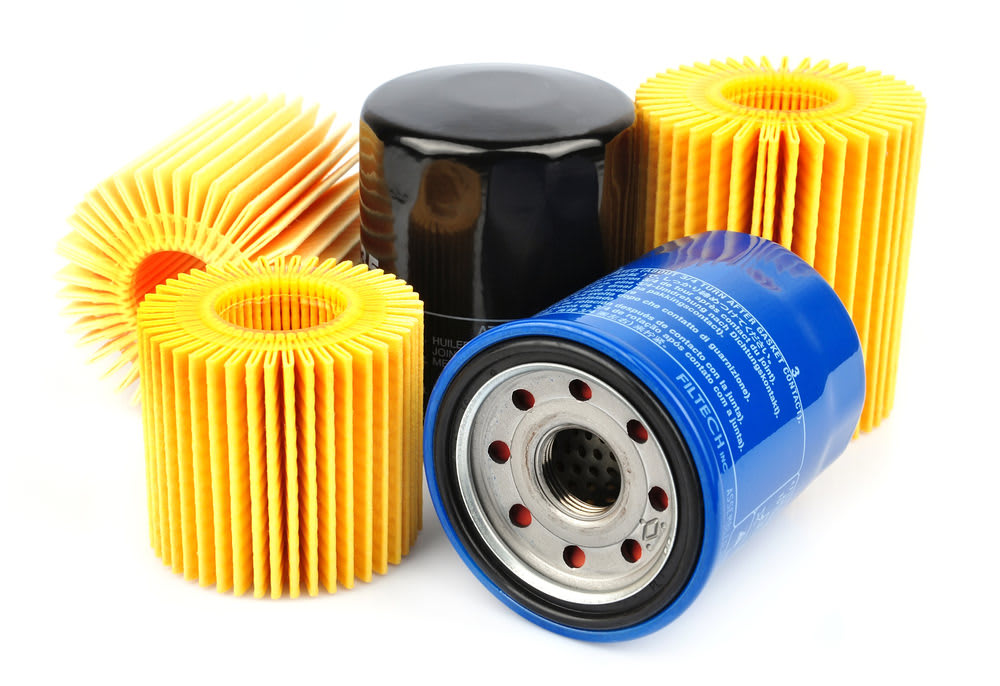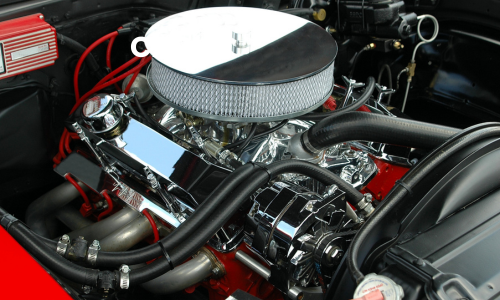An oil filter shold be changed every time the oil is changed, but How Often Should Oil Filter Be Changed. which is usually every 3,000 to 5,000 miles. It’s essential for maintaining engine health and performance.
Regular maintenance of your vehicle is crucial for its longevity and efficiency. Among these routine tasks, changing the oil filter stands out as a key component of your car’s well-being. The is oil filter responsible for trapping contaminants that could otherwise harm your engine.
Over time, the filter can become clogged with debris, leading to reduced performance and even engine damage. To prevent these issues, a consistent schedule for replacing the oil filter is recommended. Ensuring this task is performed alongside regular oil changes can help keep your engine running smoothly and prolong its life. Always refer to your vehicle’s owner’s manual for the manufacturer’s specific recommendations, as some modern vehicles may allow for longer intervals between changes.

Credit: www.jdpower.com
The Role Of Oil Filters In Engine Health
Oil filters play a crucial role in maintaining engine health. They trap dirt, debris, and tiny metal particles. Clean oil circulates better. This keeps your engine running smoothly. Think of oil filters as the guardians of your engine.
Essential Functions Of Oil Filters
- Remove contaminants: Oil filters catch harmful debris.
- Keep oil clean: They ensure oil stays pure for engine protection.
- Support engine life: Clean oil means a longer engine life.
Consequences Of A Neglected Oil Filter
A dirty oil filter spells trouble. It can lead to poor engine performance. Dirty oil doesn’t lubricate well. This can cause engine parts to wear out faster.
| Issue | Consequence |
|---|---|
| Dirty Oil | Increases friction, wears engine |
| Reduced Oil Flow | Causes poor engine performance |
| Contaminant Buildup | Leads to engine damage |

Credit: www.hessertchevy.com
Decoding Manufacturer Recommendations
Understanding when to change your oil filter is vital for your car’s health. Let’s unravel the advice from car makers. They know best how their engines run. Their guidelines help your car last longer.
Typical Service Intervals
Most car manuals suggest new oil filters every 3,000 to 7,000 miles. This range depends on your car’s make and model. Always check your owner’s manual first. It’s your best guide.
Factors Affecting Manufacturer Guidelines
Several factors can alter the suggested schedule:
- Driving habits: Frequent short trips can lead to more frequent changes.
- Engine type: Turbo engines might need quicker oil filter replacements.
- Oil type: Synthetic oils may allow for longer intervals between changes.
- Environment: Extreme temperatures can affect oil quality and filter life.
Adhering to these guidelines helps maintain your engine and keeps your car running smoothly.
Mileage Or Time: Setting The Right Interval
knowing when to change your oil filter is importent. It keeps your engine healthy. Two factors guide this decision: mileage and time. Let’s explore how to set the right interval for your vehicle.
Mileage-based Changes
Vehicle manuals often suggest a mileage-based interval. Most cars need a new oil filter every 3,000 to 5,000 miles. Yet, modern vehicles might go 7,500 to 10,000 miles. It depends on the car’s make, model, and oil type used. Here’s what to consider:
- Check your manual for specific recommendations.
- Driving conditions matter. Rough roads or heavy towing mean more frequent changes.
- Synthetic oils can extend the interval. They last longer than conventional oils.
Using a table can help clarify:
| Car Type | Conventional Oil | Synthetic Oil |
|---|---|---|
| Standard Vehicles | 3,000 – 5,000 miles | 7,500 – 10,000 miles |
| Heavy Duty/Towing | 2,000 – 3,000 miles | 5,000 – 7,500 miles |
Time-based Recommendations
Time is just as important as mileage. Oil filters should be changed at least every six months. This is true even if the mileage isn’t high. Oil can degrade over time. Here’s a simple list to follow:
- Change twice a year for light driving.
- More often for short trips or extreme temperatures.
- Check your manual for the best time interval.
Remember: Even if the car sits idle, the oil filter still needs changing. Use these guidelines to keep your engine running smoothly.
Signs Your Oil Filter Needs Changing
Knowing when to change your oil filter is key to keeping your engine healthy. Let’s explore the signs that indicate a change is due.
Performance Red Flags
Your car might show specific performance issues when the oil filter needs attention. These signs include:
- Reduced engine power – the car struggles to accelerate.
- Engine sputtering – inconsistent running, especially at high speeds.
- Dirty exhaust – if you notice more smoke, it could be a clue.
- Odd noises – a knocking sound from the engine is a serious warning.
- Oil pressure warning light – an illuminated light or gauge indicates a filter issue.
Visual Inspection Cues
A visual inspection can often reveal the condition of your oil filter. Look for these indicators:
| Sign | Meaning |
|---|---|
| Dark oil | Old, dirty oil on the dipstick means the filter may be clogged. |
| Metal particles | These in your oil suggest the filter isn’t catching debris. |
| Oil leaks | Leakage around the filter area can point to a seal failure. |
| Filter condition | A filter that looks damaged or overly dirty needs changing. |
Regular checks and understanding these signs will help you maintain your vehicle for the long haul.
The Impact Of Driving Conditions
Understanding ‘The Impact of Driving Conditions’ on your oil filter is crucial. Different driving habits and environments affect when to change your oil filter. Let’s explore how.
Normal Vs. Severe Operating Conditions
Normal driving conditions mean smooth, clean roads with moderate temperatures. Severe conditions include:
- Heavy traffic leading to more idling
- Dusty or dirty roads causing more debris
- Short trips that prevent oil from fully warming up
- Extreme temperatures which stress the engine
Under normal conditions, oil filters last longer. Severe conditions shorten their lifespan.
Adjusting Change Frequency Accordingly
Your oil filter plays a vital role in keeping your engine clean. Recognize your driving patterns to adjust the change frequency:
| Condition Type | Change Frequency |
|---|---|
| Normal | Every 5,000 to 7,500 miles |
| Severe | Every 3,000 to 5,000 miles |
Check your vehicle’s manual for specific recommendations. Monitor your oil filter to maintain engine health.

Credit: www.yourmechanic.com
Synthetic Oil And Filter Longevity
Synthetic oil has revolutionized engine care, promising enhanced performance and extended life for your car’s vital components. Understanding how synthetic oil and filters work together is key to maintaining engine health and ensuring peak performance.
Extended Life Of Synthetic Oil
The advanced formulation of synthetic oil offers superior protection and a longer lifespan than conventional oils. Here’s how:
- Better chemical stability: resists breakdown
- Less sludge formation: keeps engine cleaner
- Improved temperature performance: effective in extreme heat and cold
This extended life means fewer oil changes and could imply longer intervals between filter replacements.
Does Synthetic Oil Affect Filter Change Intervals?
While synthetic oil lasts longer, it’s crucial to know if that impacts when to change the oil filter. Here are the facts:
| Synthetic Oil Usage | Filter Change Interval |
|---|---|
| Normal Conditions | 7,500 – 10,000 miles |
| Severe Conditions | 3,000 – 5,000 miles |
Note: Always check the vehicle’s manual and filter manufacturer recommendations as they may vary.
how often should oil filter be changed?:12 Steps
- Know Your Vehicle: Understand your vehicle’s make, model, and year to access manufacturer recommendations for oil filter changes.
- Consult Your Manual: Dive into your vehicle’s manual for specific guidance on oil filter change intervals provided by the manufacturer.
- Consider Driving Habits: Evaluate your typical driving conditions, including city commuting, highway cruising, or off-road adventures, to determine how they impact oil filter lifespan.
- Assess Oil Type: Differentiate between conventional and synthetic oils and adjust your oil filter change frequency accordingly.
- Check Environmental Factors: Take into account climate conditions like extreme temperatures or dusty environments, which may necessitate more frequent oil filter changes.
- Monitor Mileage: Keep track of your mileage and adhere to recommended oil change intervals, typically ranging from 3,000 to 10,000 miles, depending on oil type and driving conditions.
- Watch for Warning Signs: Be vigilant for symptoms of a clogged or failing oil filter, such as decreased engine performance, unusual noises, or reduced fuel efficiency.
- Perform Regular Inspections: Schedule routine inspections to assess the condition of your oil filter and ensure it’s functioning optimally.
- Follow Manufacturer Guidelines: Stay aligned with manufacturer recommendations for oil filter changes to maintain warranty coverage and preserve engine longevity.
- Customize Your Maintenance Schedule: Tailor your oil filter change frequency based on a combination of manufacturer guidelines, driving habits, and environmental factors.
- Stay Proactive: Don’t wait for warning signs to emerge; proactively schedule oil filter changes to prevent potential damage and maintain engine health.
- Trust the Experts: When in doubt, consult with automotive professionals who can provide personalized advice based on your vehicle’s needs and usage patterns.
Oil filter change interval
Optimizing the oil filter change interval is crucial for maintaining the health and performance of your vehicle’s engine. By adhering to recommended intervals based on factors such as mileage, driving conditions, and the type of oil used, you can ensure efficient filtration and lubrication, preventing potential damage and prolonging the engine’s lifespan. Whether following manufacturer guidelines or customizing the interval to suit your driving habits, staying proactive with oil filter changes is essential for keeping your engine running smoothly and reliably. Trusting in a consistent maintenance schedule helps safeguard against premature wear and tear, ensuring optimal performance mile after mile.

Diy Oil Filter Replacement Tips
Roll up your sleeves and get ready to dive into the world of DIY car maintenance. Changing your oil filter is a crucial task for keeping your engine healthy. Today’s guide is all about empowering you to tackle oil filter replacement yourself. With the right tools and a little know-how, you can save money and ensure your car runs smoothly.
Tools You’ll Need
Before we start, let’s make sure you have all the necessary tools:
- New oil filter
- Oil filter wrench
- Drain pan
- Car jack and jack stands (or ramps)
- Gloves to keep your hands clean
- Rags for any spills
- Safety glasses to protect your eyes
Step-by-step Guide
- Prepare your workspace: Park on a level surface and apply the parking brake.
- Safety first: Jack up your car and secure it with stands or use ramps.
- Drain old oil: Place the drain pan under the oil pan and remove the drain plug.
- Remove the old filter: Use the oil filter wrench to loosen and remove the filter.
- Prepare the new filter: Lubricate the new filter’s gasket with fresh oil.
- Install the new filter: Hand-tighten the new filter into place, then give it a final snug turn with the wrench.
- Replace the drain plug: Once drained, replace the plug and tighten it securely.
- Add new oil: Fill the engine with the correct type and amount of new oil.
- Check for leaks: Start the engine and look for any signs of leaking oil.
- Clean up and dispose: Properly dispose of the used oil and filter at a recycling center.
Remember, taking the time to change your oil filter regularly ensures your engine remains in peak condition. Embrace the DIY spirit and give your car the love it deserves.
Best oil filter change tool
- Oil Filter Wrench: This adjustable wrench grips tightly around the filter casing, allowing for easy removal and installation.
- Strap Wrench: Ideal for filters in tight spaces, a strap wrench wraps around the filter and provides a strong grip for twisting.
- Oil Filter Pliers: These specialized pliers have long handles and adjustable jaws, providing a secure grip for turning stubborn filters.
- Oil Filter Socket Set: Designed specifically for oil filters, these sockets come in various sizes to fit different filter types and can be used with a ratchet or wrench.
- Oil Drain Pan: A large, sturdy pan to catch draining oil, preventing messy spills during the filter change process.
- Funnel: Ensures clean and precise pouring of fresh oil into the engine after the filter change.
- Shop Rags or Paper Towels: Essential for wiping down any spills or messes during the oil filter change.
- Latex Gloves: Protects hands from coming into contact with hot oil and prevents oil and grime from getting on the skin
Frequently Asked Questions
How Many Miles Does An Oil Filter Last?
An oil filter typically lasts between 3,000 to 5,000 miles, but some high-quality filters can last up to 7,500 miles or more. Always consult your vehicle’s owner’s manual for specific recommendations.
Can I Change Oil Without Changing The Oil Filter?
Yes, you can change oil without replacing the oil filter, but it’s not recommended. An old filter can diminish the benefits of fresh oil, potentially leading to engine damage over time. Always consider changing both for optimal performance.
How Many Miles Does A Fram Oil Filter Last?
A Fram oil filter typically lasts for 5,000 to 10,000 miles, depending on the specific model and driving conditions. Always consult your vehicle’s owner manual for recommended change intervals.
How Do I Know When My Oil Filter Needs Replacing?
Your oil filter likely needs replacing if you experience reduced engine performance, notice dirty exhaust, or it’s been 5,000-7,500 miles since the last change. Check your vehicle’s manual for specific intervals.
how often to change oil filter motorcycle
Determining how often to change the oil filter on a motorcycle, is crucial for maintaining optimal engine health and performance. Typically, it’s recommended to change the oil filter with every oil change. which is a robust cruiser known for its reliability and performance, this interval usually falls within the range of every 3,000 to 5,000 miles. However, it’s essential to consider various factors that can influence the frequency of oil filter changes.
Firstly, the type of oil used in the motorcycle plays a significant role. Whether you opt for conventional or synthetic oil, it’s essential to follow the manufacturer’s recommendations for oil change intervals. Generally, synthetic oils offer superior performance and longevity compared to conventional oils, allowing for longer intervals between changes. Some riders may prefer synthetic oil for its enhanced lubrication properties and ability to withstand high temperatures and stress.
Additionally, your riding habits and conditions can impact the frequency of oil filter changes. If you frequently ride in stop-and-go traffic, city commuting, or extreme temperatures, your engine may undergo more stress and require more frequent oil and filter changes. Similarly, riding in dusty environments or on unpaved roads can introduce more contaminants into the oil, necessitating shorter change intervals to prevent engine damage.
Regular maintenance and inspections are crucial for ensuring your motorcycle’s engine remains in peak condition. Along with changing the oil and filter, it’s essential to monitor the condition of the oil during each change. If the oil appears dark, gritty, or contaminated, it’s a sign that the oil and filter may need to be changed sooner than anticipated. Additionally, be vigilant for any unusual noises, vibrations, or changes in engine performance, as these could indicate underlying issues that require attention.
while the general recommendation for oil filter changes on the falls within the 3,000 to 5,000-mile range, it’s essential to adapt this interval based on your specific riding habits, conditions, and the type of oil used. By staying proactive with maintenance and following the manufacturer’s guidelines, you can ensure that your motorcycle’s engine remains reliable, efficient, and ready for your next adventure
Conclusion
Regular oil filter changes keep your engine clean and running smoothly. Aim for every 3,000 to 7,000 miles, but consult your vehicle’s manual for specifics. Remember, maintaining a routine service schedule extends your car’s lifespan and optimizes performance. Stay proactive with your oil filter maintenance for a happier, healthier vehicle.
